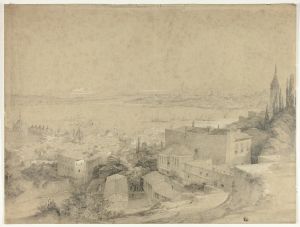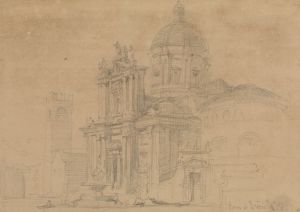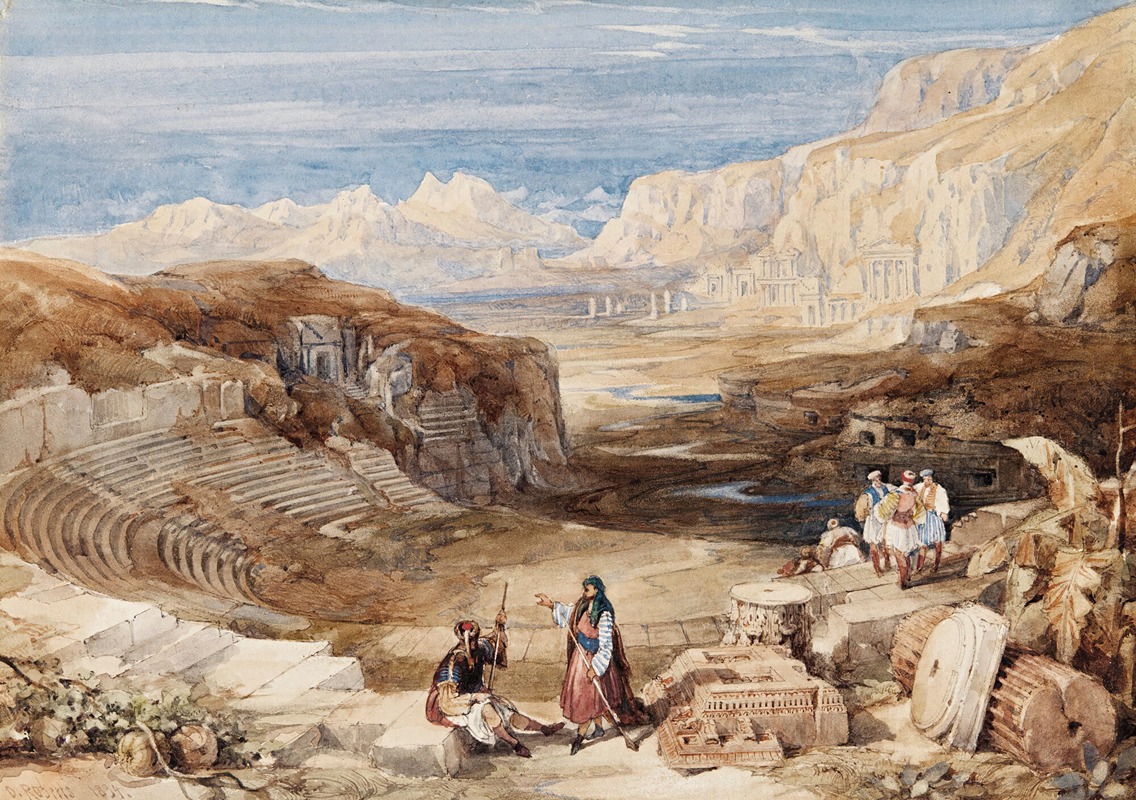
Petra, Jordan
A hand-painted replica of David Roberts’s masterpiece Petra, Jordan, meticulously crafted by professional artists to capture the true essence of the original. Each piece is created with museum-quality canvas and rare mineral pigments, carefully painted by experienced artists with delicate brushstrokes and rich, layered colors to perfectly recreate the texture of the original artwork. Unlike machine-printed reproductions, this hand-painted version brings the painting to life, infused with the artist’s emotions and skill in every stroke. Whether for personal collection or home decoration, it instantly elevates the artistic atmosphere of any space.
"Petra, Jordan" is a watercolor painting created by the Scottish artist David Roberts in 1839. Roberts, renowned for his detailed and romanticized depictions of Middle Eastern and Mediterranean landscapes, visited Petra during his extensive travels in the region. This painting is part of his larger body of work that documented his journey through Egypt, the Levant, and the Holy Land from 1838 to 1839.
The artwork portrays the ancient city of Petra, located in present-day Jordan, which was the capital of the Nabataean Kingdom. Petra is famous for its rock-cut architecture and water conduit system, and it has been a UNESCO World Heritage Site since 1985. In Roberts' painting, the focus is on the iconic Al-Khazneh, or "The Treasury," one of Petra's most well-known monuments. The structure, carved directly into the rose-red sandstone cliffs, is depicted with remarkable attention to detail, capturing its intricate Hellenistic architectural elements.
David Roberts' visit to Petra was part of his broader expedition to document the historical and cultural landmarks of the Middle East. He traveled with a caravan and local guides, as the region was not easily accessible to Western travelers at the time. His sketches and paintings from this journey were later published as lithographs in the six-volume series The Holy Land, Syria, Idumea, Arabia, Egypt, and Nubia (1842–1849). These publications gained widespread acclaim and contributed significantly to Western knowledge and fascination with the Middle East during the 19th century.
"Petra, Jordan" exemplifies Roberts' skill in combining artistic imagination with topographical accuracy. His use of light and shadow emphasizes the grandeur of the site, while the inclusion of small human figures provides a sense of scale, highlighting the monumental nature of the architecture. The painting also reflects the Romantic era's interest in exoticism and the sublime, as it evokes both the beauty and mystery of the ancient city.
David Roberts' works, including "Petra, Jordan," played a crucial role in shaping Western perceptions of the Middle East and its historical sites. Today, his paintings and lithographs are valued not only for their artistic merit but also for their historical significance as visual records of 19th-century explorations.






![Entrance to the tombs of the kings of Thebes. Bab-el-Malouk [Bîbân al-Mulûk].](/imgs/217479/s/david-roberts-entrance-to-the-tombs-of-the-kings-of-thebes-babelmalouk-biban-almuluk-599b8a4c.jpg)
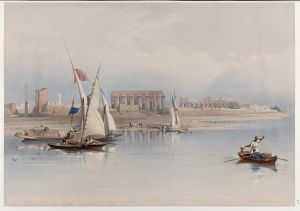
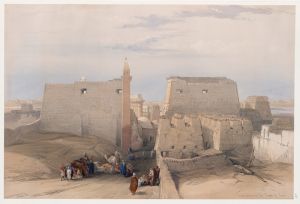
![Karnac [Karnak]. Nov. 27, 1838.](/imgs/217501/s/david-roberts-karnac-karnak-nov-27-1838-2ea4b2c4.jpg)
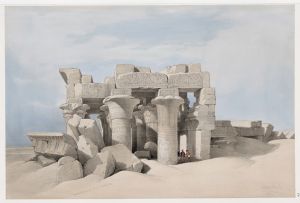
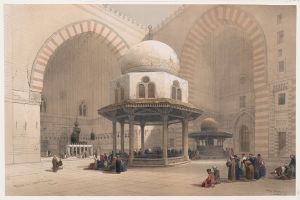
![Portico of the Temple of Edfou [Idfû], Upper Egypt. Nov. 23rd, 1838.](/imgs/217527/s/david-roberts-portico-of-the-temple-of-edfou-idfu-upper-egypt-nov-23rd-1838-79b6cf5b.jpg)
![Temple at Wady Dabod [Wadi Dâbûd], Nubia.](/imgs/217543/s/david-roberts-temple-at-wady-dabod-wadi-dabud-nubia-14fd5f6c.jpg)
![Temple of Kalabshee [Kalabsha, Kalâbishah], Nubia. Nov. 1838.](/imgs/217548/s/david-roberts-temple-of-kalabshee-kalabsha-kalabishah-nubia-nov-1838-be0ac440.jpg)
![Temple of Wady Saboua [Wadi al-Sabua], Nubia.](/imgs/217551/s/david-roberts-temple-of-wady-saboua-wadi-alsabua-nubia-52e62db.jpg)
![Tombs of the Memlooks [Mamelukes], Cairo](/imgs/217569/s/david-roberts-tombs-of-the-memlooks-mamelukes-cairo-a3263294.jpg)
